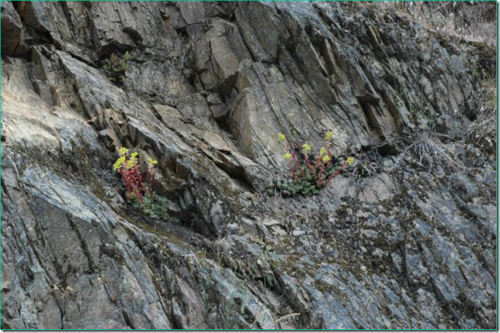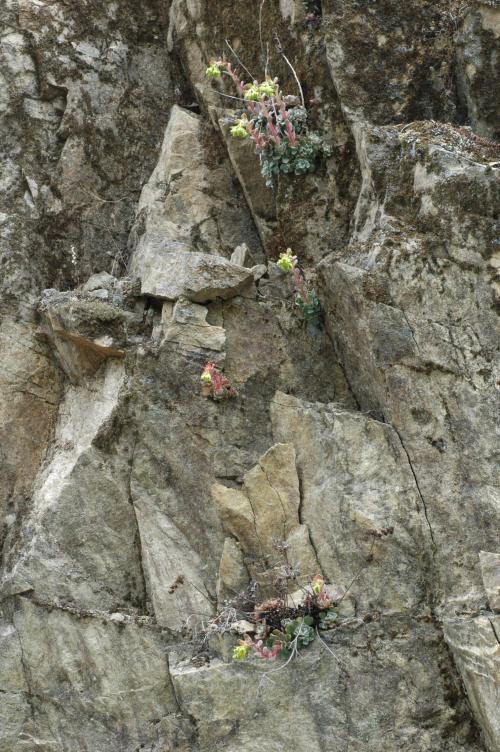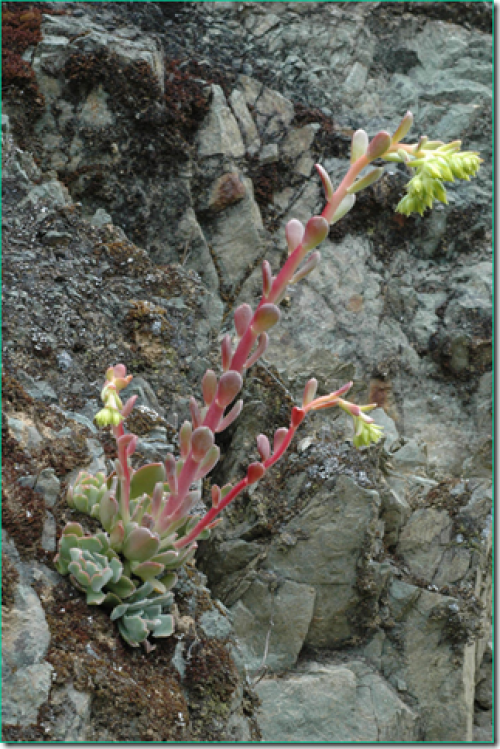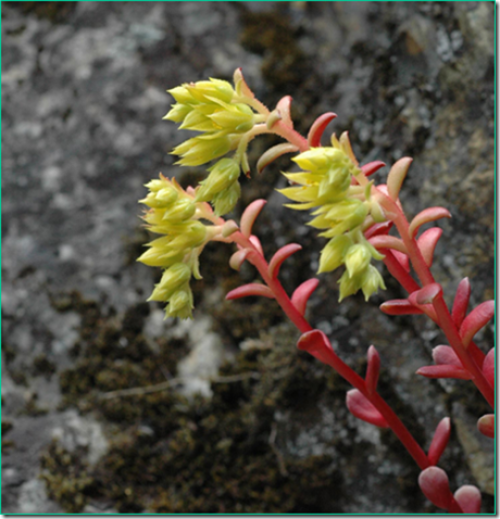MORANII R.T.Clausen, 1942
Synonyms :
Cotyledon glandulifera L.F.Henderson (1930) / Gormania glandulifera (L.F.Henderson) L.F.Henderson (1941) / Sedum glanduliferum (L.F.Henderson) M.Peck (1941)
Distribution : Western USA (Oregon : Canyon of the Rogue River); on serpentine, 10 - 220 m.
Description (by 't Hart & Bleij in IHSP, 2003) :
Perennial herbs with branched rootstock with compact rosettes.
Leaves alternate, oblong-spatulate, broadly rounded or obtuse, emarginate, papillose-crenulate at the tip, flat, stiff, 14 - 32 x 9 - 14 mm, green and glaucous when young, ascending.
Inflorescences : Flowering branches 13 - 30 cm, inflorescences cymes with 3 (sometimes 2) branches, bracts oblong-spatulate, glandular-pubescent, pedicels 1 - 3,6 mm.
FIowers 5-merous, sepals broadly sessile, basally connate, ovate or lanceolate, obtuse or acute, ± 7,5 x 4 mm, glandular-pubescent, erect, petals basally connate, convolute, oblong-lanceolate, aristate, glandular-pubescent, sulphur-yellow, ± 14 mm, erect, filaments greenish-yellow, anthers yellow.
Cytology : 2n = 30
Ray Stephenson (Sedum, Cultivated Stonecrops, 1994, pp 202 - 203) :
Common name : Glandular stonecrop
Sedum moranii is similar to S. laxum, S. obtusatum, and S. oregonense, but it has huge pendant yellow flowers with erect petals on unique glandular-pubescent inflorescences. Low-growing, compact rosettes are made up of stiff, ascending leaves, which are emarginate or rounded, and which redden at papillose tips (Leaf shapes, fig. 5h). It is a very rare stonecrop in cultivation.
Habitat : This species is also very rare in habitat having only a limited distribution in the Canyon of Rogue River, Josephine County, Oregon, in moss on serpentine in steep sites with a southwest or west exposure at just over 200 m (700 ft) above sea level.
Main points of distinction : Semivertical leaves with scalloped tips in compact rosettes are quite distinct. Hairy inflorescences, drooping in bud, with large, hairy, nodding, yellow flowers, are anomalous for Sedum. Like other Gormania species, the petals of Sedum moranii are upright and connate for a noticeable portion of their length. Anthers are particularly short, and stamens, in essence, are epipetalous in that all are borne on the floral tube. Carpels remain erect, and beaks are on the inner side. Offsets appear from below ground. 2n = 30.
Variation : Some clones have thicker leaves than others.
Horticulture :This is a most pleasing, slow-growing species, which should be hardy in most temperate areas. It is ideal as a specimen alpine despite its low-altitude origins.
See also A review of Sedum section Gormania (Crassulaceae) in western North America, in Phytotaxa 368 (1): 1-61, 2018.
Grave Creek, Rogue River confluence, peridotite endemic :





Photos Ray Stephenson